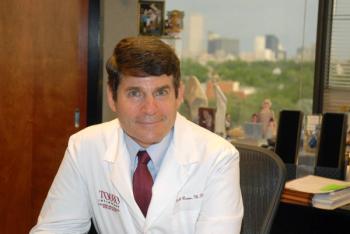Across the country, medical practices are asking a provocative question: Can nurse practitioners (NPs) and physician assistants (PAs) fill the traditional role of the physician or do practices still need doctors to ensure quality and safety?
With an ongoing shortage of primary care physicians and expanded scope-of-practice laws in many states, the issue is increasingly practical rather than philosophical. The answer, experts say, depends on the practice’s size, complexity and goals.
How staffing models are changing
The number of NPs in the United States has risen sharply in recent years as practices turn to advanced practice professionals to meet growing patient demand. According to Medical Economics, NPs now account for a significant share of the health care workforce as more practices look to them to meet patient needs. A 2025 report found that nonphysician clinicians now make up more than 40% of the U.S. provider workforce.
Meanwhile, physician shortages continue to worsen. Many regions—especially rural areas—face severe shortfalls in primary care doctors, pushing practices to hire NPs and PAs to maintain access. In 26 states, NPs have full practice authority, meaning they can evaluate patients, diagnose conditions and prescribe medications without physician oversight, according to Physicians Practice.
When you still need a doctor
Despite the growing role of advanced practice clinicians, physicians remain essential for many reasons.
- Complex diagnostics and procedures. Physicians receive years of additional training, including medical school and residency, that NPs and PAs do not. The American Medical Association notes that physicians complete three to seven years of residency or fellowship, while NPs have no residency requirement. For complex cases involving multiple comorbidities or invasive procedures, physicians are still the gold standard.
- Regulatory and reimbursement rules. Many payers and credentialing bodies still require physician oversight for certain procedures, meaning a doctor must remain part of the care team.
- Patient preference. Surveys consistently show that patients prefer to see physicians for complex or new medical issues.
- Clinical leadership. Physicians often set care protocols, oversee quality measures and lead referral networks, providing strategic direction for the practice.
5 signs your practice still needs a physician
Even as nurse practitioners and physician assistants take on more responsibility, some practices still require a doctor’s expertise. If any of these apply to your organization, you may need to keep (or add) a physician on staff.
1. You handle complex or high-risk cases.
If your practice regularly manages patients with multiple comorbidities, performs procedures, or interprets advanced diagnostics, physician oversight remains essential for quality and liability reasons.
2. You participate in value-based contracts or advanced payer programs.
Many payers still require physician credentialing or sign-off on treatment plans, especially under value-based reimbursement models.
3. Your patients expect physician-led care.
Brand reputation matters. If your marketing, signage or online reviews emphasize “doctor-led” care, a sudden shift to a nonphysician model can erode trust.
4. Your state limits independent practice.
Scope-of-practice laws vary widely. In states without full practice authority for nurse practitioners, a physician must still supervise or collaborate on patient care.
5. You’re planning to expand services.
If your growth plans include specialty procedures, hospital affiliations or telehealth licensing across states, physicians will likely be required for compliance and continuity.
A Physicians Practice article on adding new clinicians emphasizes that when patient complexity and case mix increase, hiring another doctor may be more appropriate than adding another advanced practitioner.
When an NP or PA may be the right fit
In many cases, however, nonphysician providers can deliver care of similar quality at lower cost.
- Routine and preventive visits. For stable patients with chronic conditions or preventive care needs, studies show nurse practitioners can provide comparable outcomes. A Harvard Public Health article explains that in many primary care settings, NPs serve effectively as primary care providers.
- Improving access. Advanced practice clinicians help reduce wait times and increase patient satisfaction. Physicians Practice reports that hiring a PA or NP is an effective way to decrease a physician’s workload and improve efficiency.
- Cost efficiency. NPs and PAs earn lower salaries than physicians and can be onboarded faster, allowing practices to expand capacity without dramatically increasing overhead.
- Scope-of-practice expansion. As states continue to grant NPs full practice authority, the flexibility to staff clinics without physicians increases. Medical Economics notes that expanded NP training and authority are reshaping the traditional definition of “provider.”
A separate Physicians Practice report on hiring NPs or PAs says recruiting advanced practitioners should be based on economic needs and a commitment to team-based care.
Finding the balance
In most cases, the right answer is not “either/or” but “both/and.” Physicians and NPs or PAs working in tandem can deliver the best combination of quality, access and cost control.
Physicians Practice argues that while nonphysician providers add value, they do not fully replace doctors. Instead, the most successful practices combine physician leadership with advanced practitioner support.
Medical practices still need doctors—but not necessarily as many as in decades past. For complex cases, leadership, and procedural work, physicians are indispensable. For preventive care, chronic disease management and access expansion, NPs and PAs can often deliver comparable results.
For administrators, the key is to structure the care team based on patient mix, regulatory requirements and financial goals. Practices that strike the right balance between doctors and advanced practice professionals will be best positioned to thrive in 2026 and beyond.











